India’s stepwells inspire Shalini Misra’s rug collection
Shalini Misra’s Stepwells collection of rugs for Cc-tapis is informed by the traditional structures, recreated in three designs
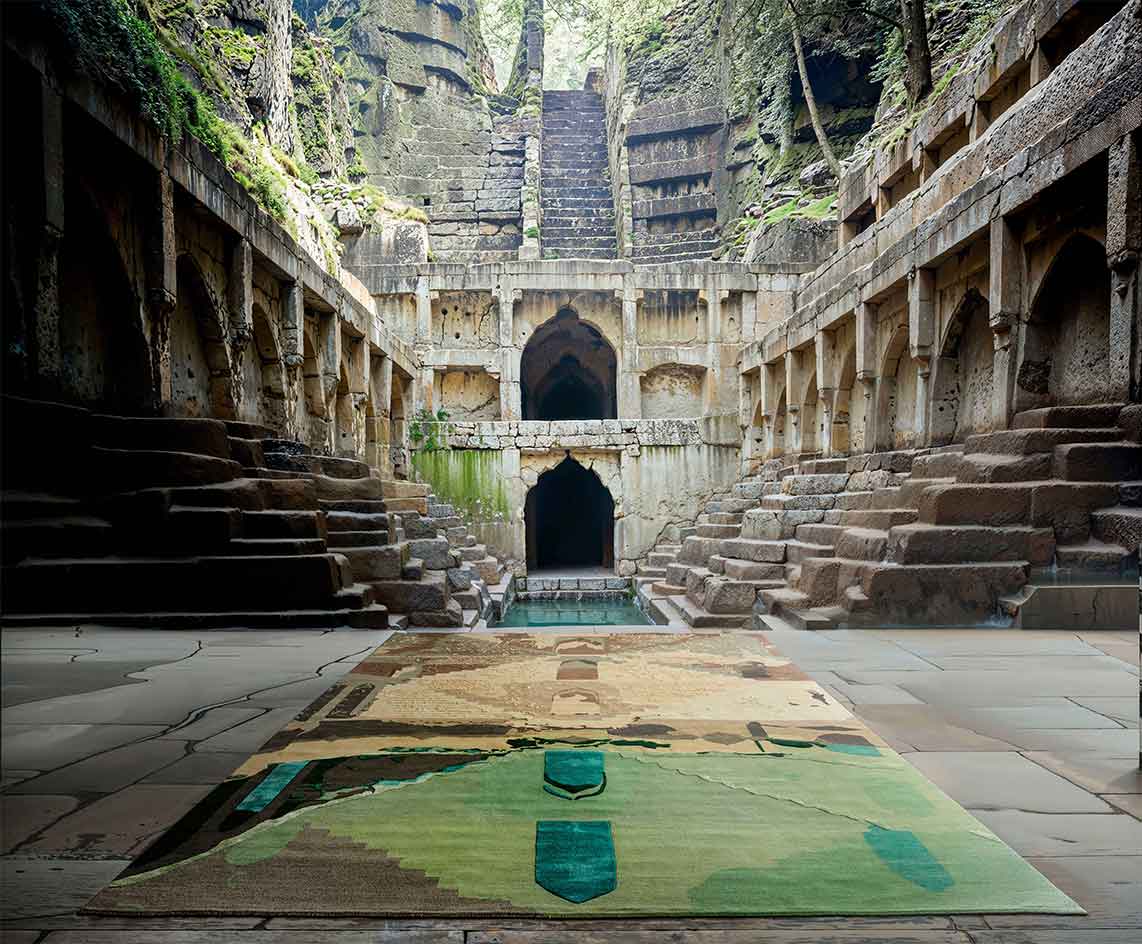
Every ancient civilisation has made architectural contributions to the world, and alongside the Egyptian pyramids, Greek columns, and China’s great wall, one of India’s most significant are the stepwells. These unique and intricate structures once numbered in their thousands across India, and have now provided the inspiration for a new collection of rugs designed by Shalini Misra (whose interior design prowess we’ve previously explored in a London family home) and produced by Cc-tapis (a brand among our Best Surrealist Design winners in the Wallpaper* Design Awards 2024).
Designed to allow access to water via a series of cascading terraces – so that it was within reach no matter how high or low the level – the stepwells turned the simple act of fetching water into a vibrant public show. They were lavishly ornamented, with niches and pavilions where people could swim, bathe, perform religious rituals, and enjoy the natural cooling effect of the stored body of water. Today, stepwells can be found scattered across India, some abandoned, some still in use.
Stepwells Collection by Shalini Misra for Cc-tapis
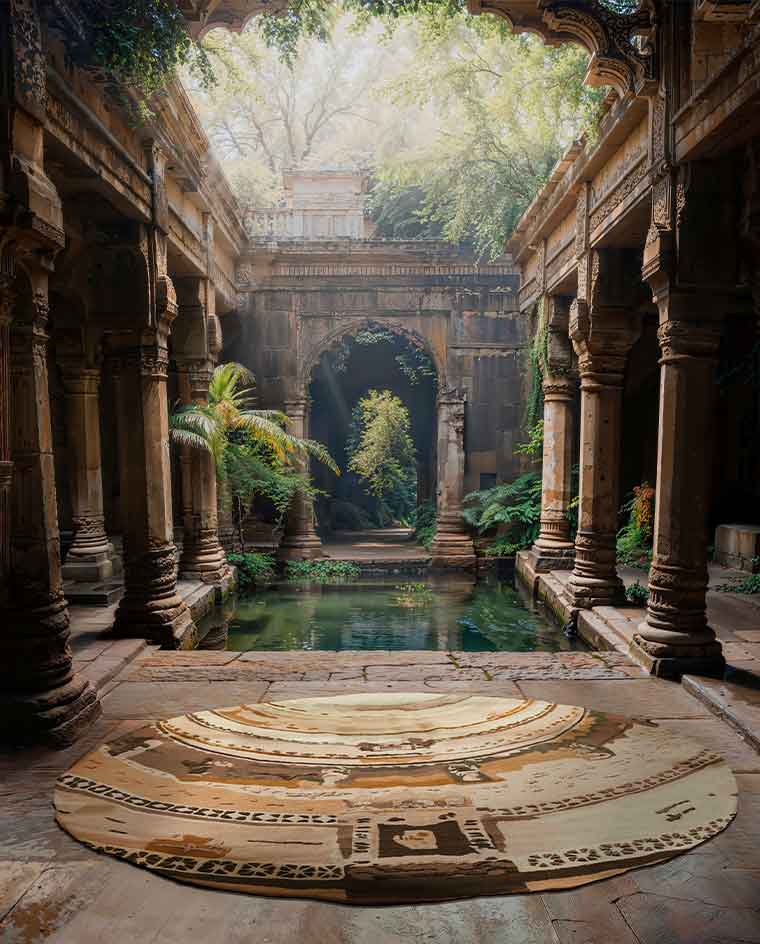
The Stepwells collection is the first exclusive product that Misra has designed for Curio, her proprietary digital platform offering a curated edit of handmade furniture, lighting, accessories and art sourced from around the world. The London-based designer established her interior design studio in 2000, and now operates from offices in New York, Dubai and Delhi.
It was her own Indian heritage, her experience with the country’s craftsmanship and commitment to wellness in her design that drew her to the stepwells as a source of inspiration. In India, as in many cultures, water is considered a purifying, renewing and sacred element.
These rugs are not just beautiful pieces of art but also a reminder of the importance of sustainability and community, Misra explains. 'We wanted to create pieces that would reflect the functional, spiritual, social and aesthetic properties of the stepwells, that would not only showcase extraordinary craftsmanship, but that would be really rooted in a sense of place too. As an architect by training, I have always been inspired by the incredible functionality and intricate aesthetic of India’s stepwells.'
Each of the three statement rugs features traditional references and a locally inspired colour palette, and is named after the specific stepwell that inspired its design. ‘Ujaja Bioli’ is a large rectangular rug, ‘Adalaj ni Vav’ is a circular rug, and ‘Rani Ki Vav’ is a runner rug (stepwells are also known as baolis and vav).
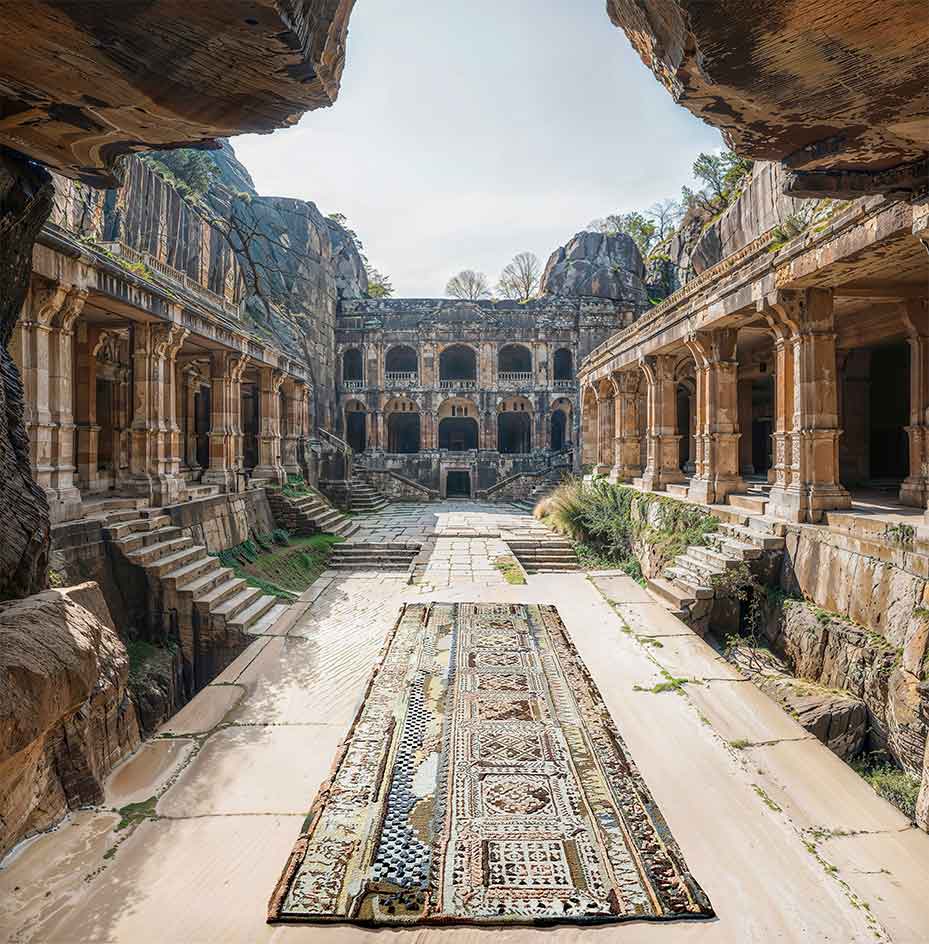
In Cc-tapis, Misra finds a perfect producer for the Stepwells collection. The Italian rug maker is renowned for its beautifully crafted and sustainable designs as well as its growing series of creative collaborations. Founder Fabrizio Cantoni describes how each piece takes 14 to 17 weeks to complete, and the company prioritises sustainability through the use of ethically sourced materials and eco-friendly production practices.
Receive our daily digest of inspiration, escapism and design stories from around the world direct to your inbox.
'Our artisans pour everything into each rug,' he says. 'Pieces can include up to 232,000 individual knots per square metre. The finishing processes, including hand-cutting and embossing, contribute to the exceptional quality. The hand-knotting technique is at the core of our production process, a method common in the Middle East, India, and China.' From refining raw materials to dying processes, every stage is managed in-house.

The images of Indian stepwells are translated onto the rugs by weaving exceptionally delicate gradients of hand-dyed Himalayan wool. To evoke a surreal and sculptural effect, Cc-tapis’ Nepalese artisans integrate different pile heights, textures and an original combination of colours to define the varying levels of stepwells and elaborate carvings – thoughtful craftsmanship at its finest.
Reducing the geometry of the stepwells to a more two-dimensional form in the rugs doesn’t compromise their power to bring people together, says Misra. 'Like the stepwells, rugs, as functional and textural foundations, have a unifying power, and this is something we wanted to highlight.' They act as grounding elements for both entertaining and everyday living, she says. 'Historically, the stepwells would act as the heart of community, a safe haven – in particular for women, offering protection and shelter from the overpowering heat as they fetched water for the community.'
Though India’s stepwells are disappearing and many have been left deserted due to modernisation, governmental and heritage organisations are working to conserve the architectural phenomenon.
Henrietta Thompson is a London-based writer, curator, and consultant specialising in design, art and interiors. A longstanding contributor and editor at Wallpaper*, she has spent over 20 years exploring the transformative power of creativity and design on the way we live. She is the author of several books including The Art of Timeless Spaces, and has worked with some of the world’s leading luxury brands, as well as curating major cultural initiatives and design showcases around the world.
-
 At last: a London hotel that’s great for groups and extended stays
At last: a London hotel that’s great for groups and extended staysThe July London Victoria, a new aparthotel concept just steps away from one of the city's busiest rail stations, is perfect for weekends and long-term visits alike
-
 Three new smartwatches showcase new frontiers in affordable timepiece design
Three new smartwatches showcase new frontiers in affordable timepiece designLong may you run: smartwatches from Withit, Kospet and OnePlus favour function and value above all else, demonstrating just how much the smartwatch has evolved in recent years
-
 Debuts, dandies, Demi Moore: 25 fashion moments that defined 2025 in style
Debuts, dandies, Demi Moore: 25 fashion moments that defined 2025 in style2025 was a watershed year in fashion. As selected by the Wallpaper* style team, here are the 25 moments that defined the zeitgeist
-
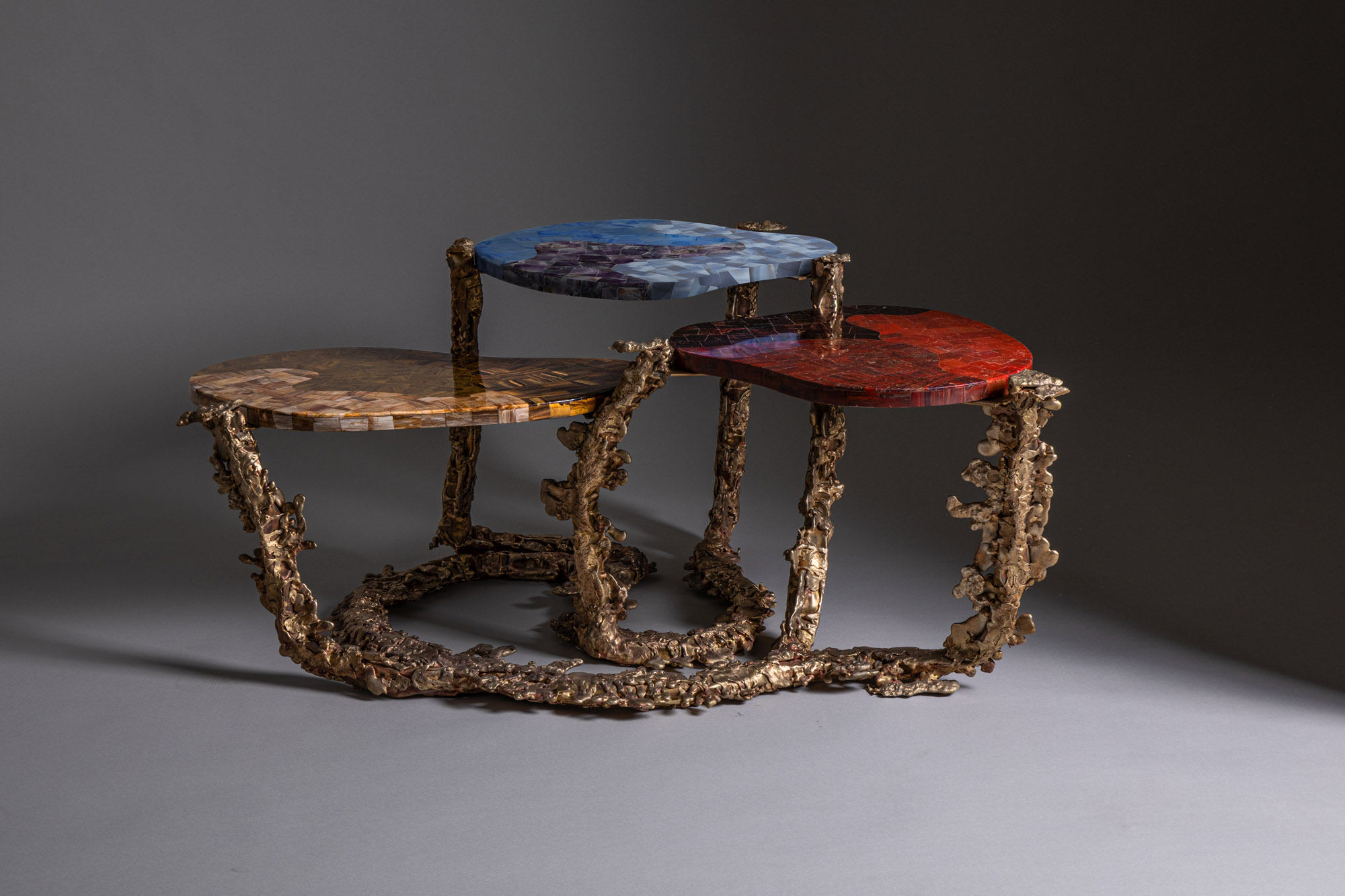 Inside the Shakti Design Residency, taking Indian craftsmanship to Alcova 2025
Inside the Shakti Design Residency, taking Indian craftsmanship to Alcova 2025The new initiative pairs emerging talents with some of India’s most prestigious ateliers, resulting in intricately crafted designs, as seen at Alcova 2025 in Milan
-
 'Now, the world is waking up': Vikram Goyal on bringing Indian craftsmanship to the global stage
'Now, the world is waking up': Vikram Goyal on bringing Indian craftsmanship to the global stageWe talk to Indian craft entrepreneur Vikram Goyal about redefining heritage, innovating with repoussé, and putting Indian craftsmanship on the global map.
-
 ‘The Indian market has come of age’: Inside Nilaya Anthology, India’s new design destination
‘The Indian market has come of age’: Inside Nilaya Anthology, India’s new design destinationNilaya Anthology – a global design showroom with a distinctly Indian perspective – has opened in Mumbai
-
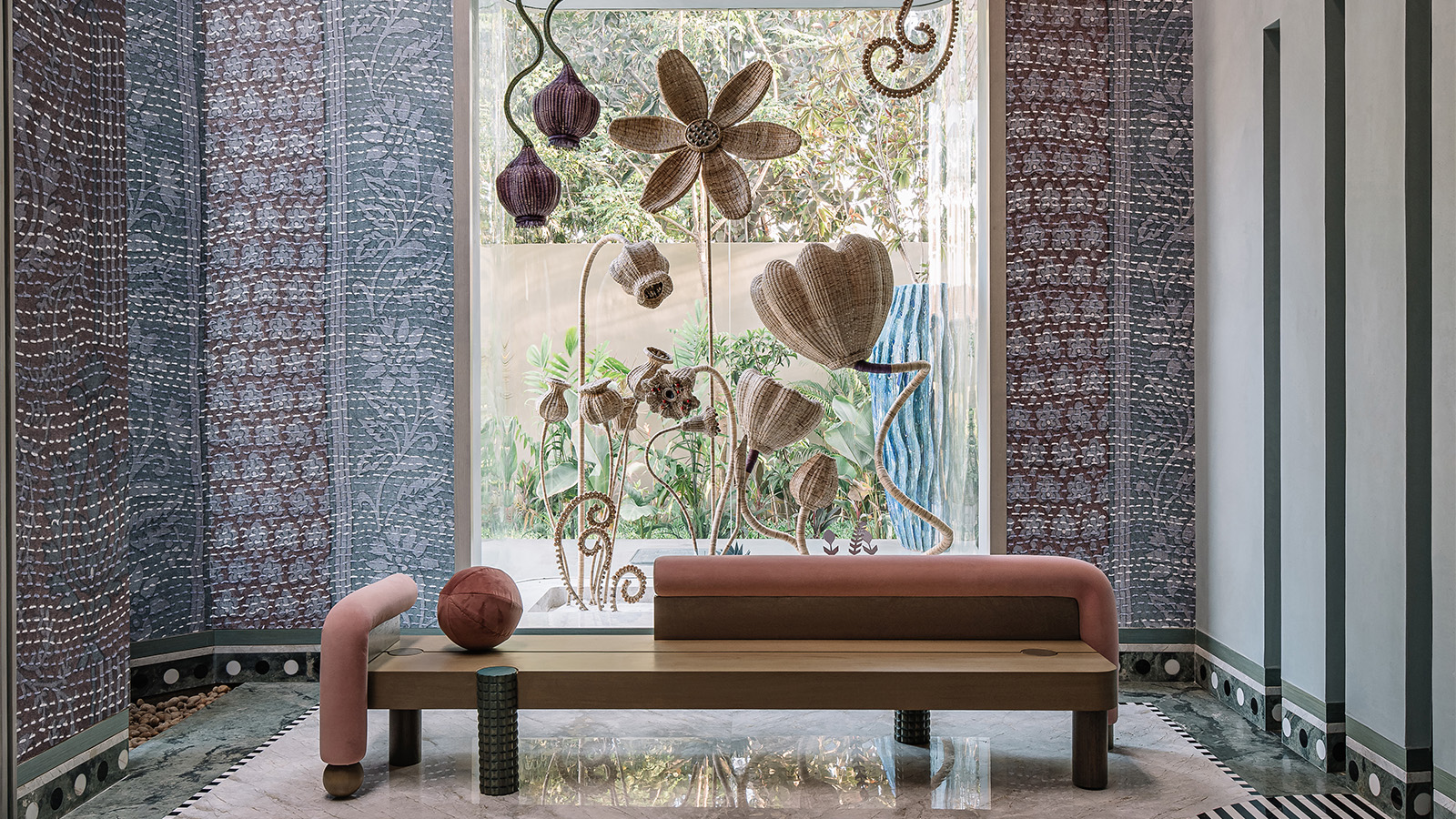 This ethereal Chennai home is a celebration of Indian craft and culture
This ethereal Chennai home is a celebration of Indian craft and cultureDesigned by Multitude of Sins, this Chennai home is an artisanal trove of rich texture and secret garden-like design. Wallpaper* speaks with design principal Smita Thomas on crafting the space
-
 Indian furniture brand SĀR Studio is putting Pune on the map with a new flagship and residency programme
Indian furniture brand SĀR Studio is putting Pune on the map with a new flagship and residency programmeSĀR Residence, a multi-use concept space, acts as an extension of the Indian furniture brand
-
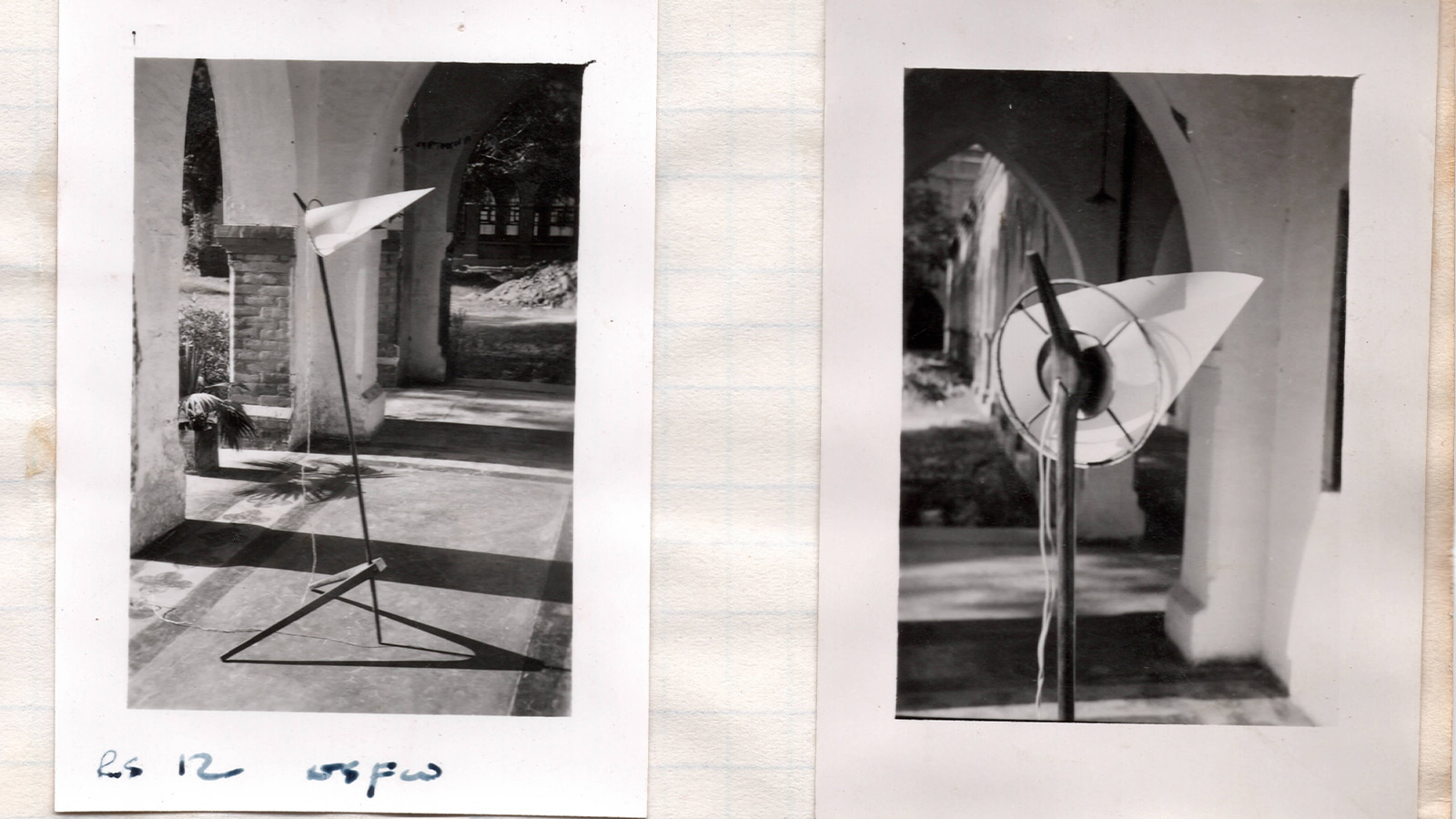 Pierre Jeanneret and Edward Armitage: tracing design inspiration in Chandigarh
Pierre Jeanneret and Edward Armitage: tracing design inspiration in ChandigarhBritish designer Joe Armitage set off for Chandigarh, India, to trace his grandfather Edward’s footsteps and recreate a photograph of the latter’s ‘Armitage’ lamp. A trail of intrigue around its inspiration lay in wait, as he reveals
-
 It’s the first-ever Design Mumbai: here’s what to see
It’s the first-ever Design Mumbai: here’s what to seeAt least 100 international and Indian brands will showcase at Design Mumbai, referencing India’s rich and storied heritage of craftsmanship and highly specialised craft clusters (6-9 November 2024)
-
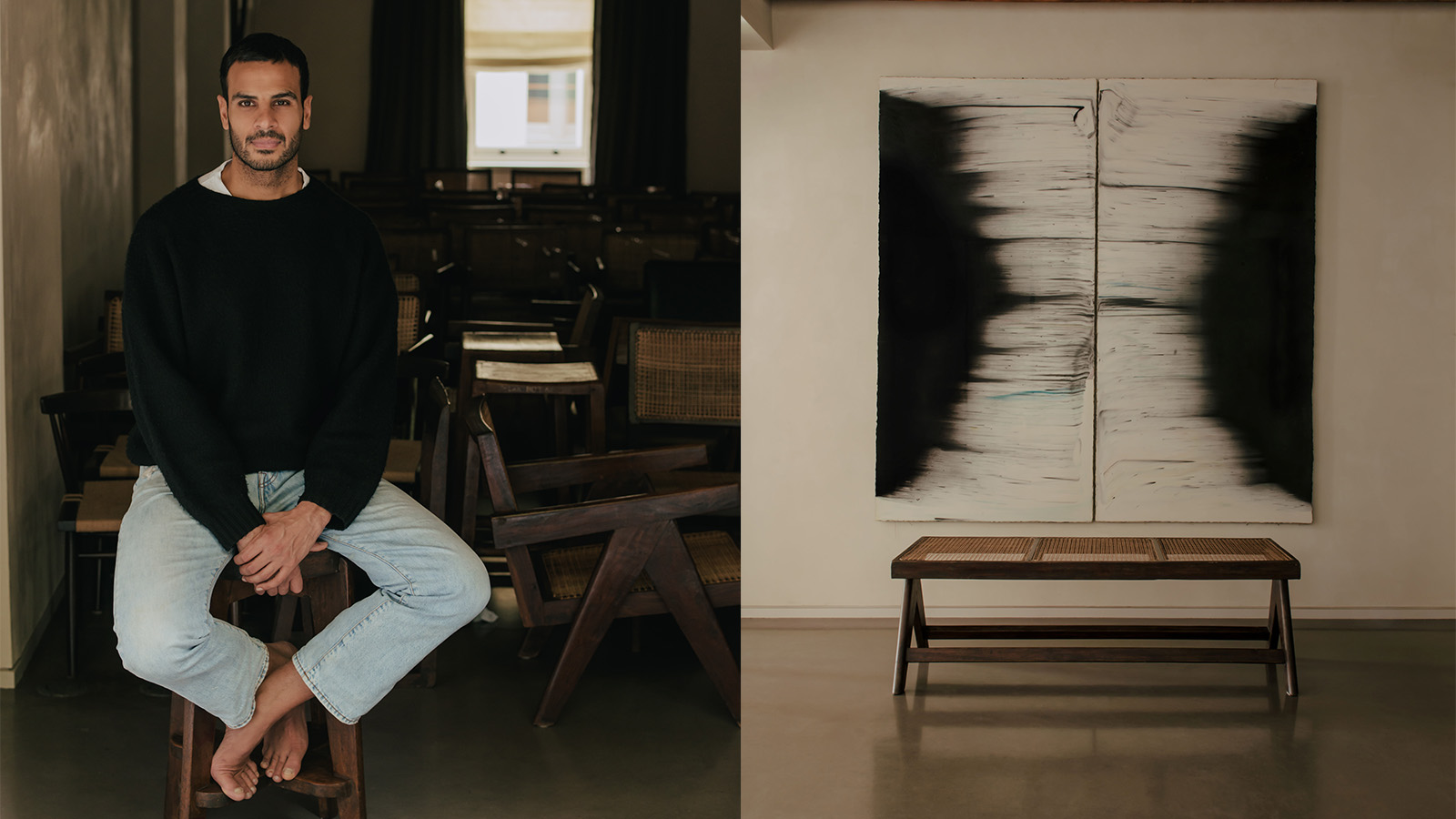 Pierre Jeanneret’s Chandigarh furniture meets South Asian diasporic art in an unusual London exhibition
Pierre Jeanneret’s Chandigarh furniture meets South Asian diasporic art in an unusual London exhibitionRajan Bijlani opens a show combining Pierre Jeanneret furniture for the Indian city of Chandigarh with works for sale by six artists of South Asian origin – in his own London townhouse